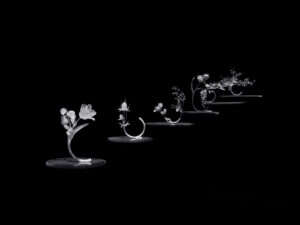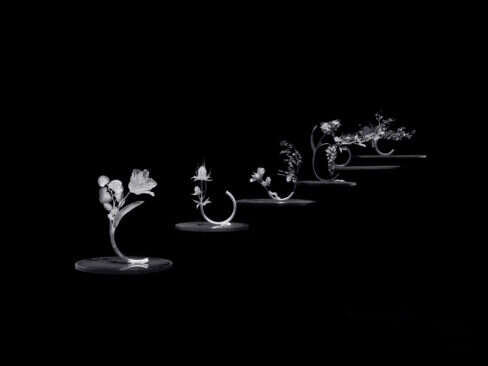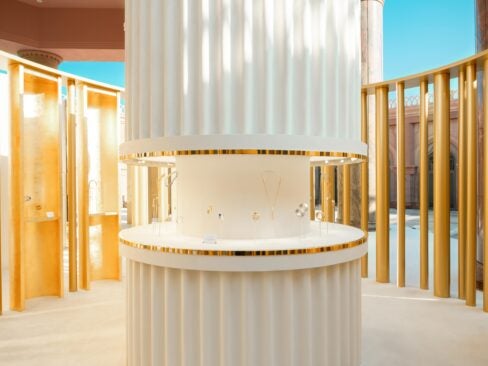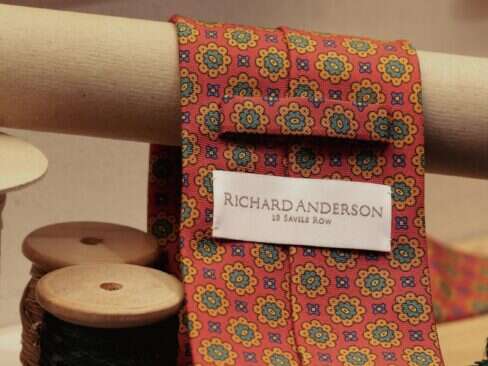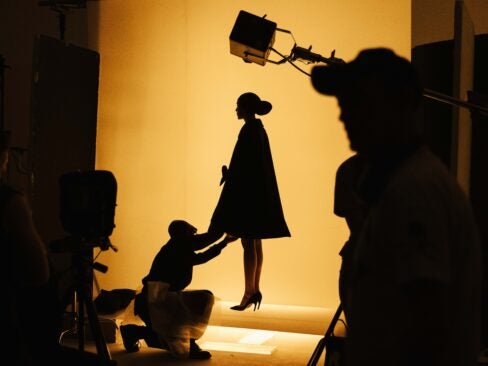Synonymous with elegance, sophistication and style, Louis Vuitton is the ultimate in brand royalty. With more than 400 Louis Vuitton stores worldwide, the iconic label can be found in every fashion city throughout the world and counts celebrities among its fans.
Just last year, Louis Vuitton was estimated to be worth $25.9 billion, making it the most valuable luxury fashion brand in the world, according to a study by Millward Brown Optimor.
But while today the fashion giant counts supermodels Kate Moss and Naomi Campbell among its following, it hails from much humbler beginnings, when a young Louis Vuitton arrived in Paris in 1854 to make his fortune as a trunk maker.
Vuitton’s story began in 19th-century Paris when he arrived in the city aged 16. After making the decision to become a trunk maker, he joined Parisian box-maker and packer Monsieur Marechal as an apprentice, where he learned the ropes of packing elegant clothing for high society.
[See also: How to Build the Ultimate Spring Capsule Wardrobe]
Seventeen years later, Vuitton left Mareschal’s business and opened his first store on Rue Neuve des Capucines (now Rue Capucines).
This was a turning point for Vuitton as, although he enjoyed success as a box-maker and packer, he wanted a new challenge. With his skills in wood craft, he embarked on a quest to create improved trunks for his customers with appearance, practicality and protection in mind. Up until this point, it had been difficult to be able to stack trunks because of their dome-shaped tops.
Next, Vuitton sought to find an alternative to the leather used in the trunk’s casing, which caused a strong, unpleasant odor. He developed a canvas in a fashionable color called ‘Trianon grey’, which as well as being lighter than the leather, was completely waterproof and revolutionized luggage as a fashion item.
Soon, however, other trunk makers began to copy Vuitton’s designs, forcing him to change them a number of times. He introduced a beige and brown stripe design in 1876 and also placed “marque L. Vuitton déposée” logo inside the trunks.
In 1885, the opening of the brand’s first UK store in Oxford Street, London, signaled the start of its expansion. Disappointing sales, however, resulted in the store relocating to New Bond Street, opposite where the UK flagship can be found today.
[See also: The Most Coveted Luxury Sustainable Fashion Labels]
When Vuitton passed away in 1892, he passed the reins to his son Georges, who envisioned LV as a global corporation. As well as introducing – and patenting – the iconic Monogram canvas, Georges invented the unpickable tumbler lock in 1890, which is still in use today, and revolutionized the brand’s secure line of luggage. Years later, he publicly challenged famous magician Harry Houdini to try and escape from Vuitton’s luggage to prove how secure it was. Houdini’s response to which is not known.
By this point, Vuitton’s first store had already moved to Rue Scribe, but its relocation to Champs-Élysées in 1914 signaled its position as the biggest luggage store at the time.
Louis Vuitton had already started to branch out with the design of bags during the early 1900s, but in 1932 the introduction of the Noe bag – initially designed to carry champagne – saw a transformation in the brand’s direction after it became a fashion accessory in Paris.
In 1936 Georges Vuitton died, leaving his son Gaston-Louis to take over the family business. This change of hands saw the monogram canvas revamped and used across the company’s purses, bags and wallets.
Since then, Louis Vuitton has continued its journey from trunk maker to the biggest luxury fashion brand in the world, with iconic models photographed clutching their LV bags and piles of luggage along the way.
Today, the brand is the epitome of fashion, spearheaded by Marc Jacobs, Louis Vuitton’s first creative director, and offers lines of apparel, footwear and accessories in stores in every corner of the globe, including Maisons in Champs-Élysées, Paris and New Bond Street, London.
Champs-Élysées, Paris, France
With its grand art deco facade, the Louis Vuitton Maison on the Champs-Élysées is an iconic feature of the famous Parisian street – and stands virtually opposite the first store building commissioned by Louis Vuitton, which opened in 1914.
The brand returned to the Champs-Elysées in 1998 (and reopened again in 2005 following extensive renovation) in a 1931 building, which was originally designed to house the Maison de France. Jointly designed by architects Eric Carlson and Peter Marino in consultation with Louis Vuitton, the 2005-renovated store celebrates the Champs-Elysées’ historical and cultural importance with the “store promenade”, a new concept which sees the promenade continue into the store.
Four levels of retail space house exclusive designs in leather goods, shoes, watches and jewelry, which have been created especially for the Champs-Elysées, as well as sunglasses and a bookshop selling collections published by Louis Vuitton and one-of-a-kind books related to art, travel and lifestyle.
Surprisingly, the store does not have floors or storeys in the conventional sense, but instead features a succession of terraces. In addition, contemporary art is an integral part of the retail environment, with artists such as Stephen Sprouse and Takashi Murakami bringing their creative vision to bear on the Monogram canvas. A light sculpture by James Turrell, from his “Tall Glass” series, also features, while fiber optic panels alongside the store’s 20-meter long ‘traveling staircase’ showcase the work of video artist Tim White-Sobieski. [Image credits: Louis Vuitton / S. Muratet]
New Bond Street, London, England
When Louis Vuitton opened the New Bond Street store in 2010, it marked the importance of the brand’s 125-year association with London, and the optimism of it being one of the foremost luxury centers in Europe.
Designed by New York-based architect Peter Marin to be exceptionally luxurious and appeal to collectors, the Maison – or megastore – is open and light, while still being intimate and easy to navigate, featuring a glass and LED staircase, a two-storey wall of trunks, silk wallpaper and glossy bamboo.
Located in the heart of the West End, the Maison appeals to collectors with its range of the best and rarest pieces. The ground floor is devoted to Louis Vuitton accessories and includes original artworks, along with exclusive products specially designed for the store. Separate, circular zones consist of costume jewelry and sunglasses, while a private client room is available next to the high jewelry area.
The lower ground floor houses the men’s universe and includes the men’s club area, where customers and their guests can relax. Womenswear and shoes can be found on the first floor, along with a unique Librairie that showcases the best of British contemporary art books. The store’s second floor can only be accessed by invitation and includes private client suites.
Marina Bay Sands, Singapore
Architect Moshe Safdie and designer Peter Marino collaborated to create Louis Vuitton’s first ever Island Maison in 2011.
Located on Marina Bay, the store occupies one of the all-glass structures designed by Safdie at the resort. Emerging from the water, the 25,000 square foot crystal pavilion features 300 unique skylights, which creates an amazing view when lit up at night.
Inside, nautically inspired interiors set the luxurious scene of being on a yacht, while high ceilings and glass walls offer remarkable views of Marina Bay.
The ground floor of the Island Maison features a complete selection of men’s and women’s leather goods, ready-to-wear, shoes and accessories, while the mezzanine level houses the first “Travel Room” in the Asia Pacific, an area dedicated to travel luggage and accessories.
The store is accessed from the Marina Bay Sands mall via a tunnel, which showcases pieces of contemporary artwork, while at the end of the tunnel visitors can find a Louis Vuitton bookstore, consisting of design, cultural and art books.
A spiral staircase on the same floor takes shoppers up to a display of timepieces, fine jewelry and exceptional leather bags.
Las Vegas, USA
One of the largest stores in North America, Louis Vuitton at Crystals in CityCenter has all of the glitz and glamour a Las Vegas shopper could ask for.
Located at the entrance of Crystals, the store’s facade consists of steel panels embossed with an abstraction of the “LV” motif, while at night it comes alive with a dazzling light show made from over 4,000 LEDs.
Inside, a 31ft chandelier made of 1,600 titanium-plated LV flower motifs dazzles above 14,000 square feet of retail space spread over three floors. The result of a collaboration with renowned New York architect Peter Marino, the store features three-dimensional metallic curtains, which include Louis Vuitton flower and damier motifs, along with playful artwork by Belgian artist Lionel Esteve.
Shoppers can get their hands on an array of leather goods from the traditional and innovative collections of luggage and city bags, ready-to-wear shoes, watches, jewelry, sunglasses, textiles, ties and accessories.
The store also features an installation titled Akhob by contemporary artist James Turrell. Specially created for Louis Vuitton, this permanent installation is a “ganzfeld effect”, a phenomenon of visual perception most studied by staring at an unstructured uniform field of color.
Venice, Italy
In May 2013, Louis Vuitton unveiled the Maison Louis Vuitton Venezia, the first with a cultural space in Italy and only sixth in the world.
On arrival at the Maison, visitors are struck by the rationalist and monumental palazzo, designed by architect Brenno Del Giudice in 1936, which houses the store. Inside, a lobby opens onto spaces dedicated to men’s and women’s leather goods.
A curved staircase leads to the first floor and the men’s collections, including the ready-to-wear collection designed by Kim Jones, while the floor above houses the women’s collections and features artwork from Jean-François Rauzier. Here, shoppers have the chance to indulge in the Marc Jacobs-designed ready-to-wear collection, as well as the most beautiful Louis Vuitton shoes, straight off the catwalk.
Visitors can also find a private room hidden behind two doors and a bookstore offering art books and major publications from Éditions Louis Vuitton, along with sofas, a reading space and a selection of prints.
Once again, the interior has been a collaboration between Louis Vuitton and architect Peter Marino, and includes a concept of modernity punctuated by tradition, while paying homage to the city’s craftsmanship. The walls feature a glossy ivory of the Venetian stucco, decorated with pale golden shelves, which contrasts with the dark wood of the floor counters.
Soho, New York, USA
In June 2013, the SoHo store added a unique dimension to its offering: the brand’s first in-store atelier in North America.
Located in a space ajoined to the store’s travel room, the workshop is dedicated to craftsmanship and pays special tribute to SoHo, which has a rich artisanal history.
Visitors to the store have the opportunity to see specialized artisans customize Louis Vuitton’s leathergoods and trunks with hand-painting and hot stamping techniques.
Alongside the travel room and atelier, the store offers a range of clothing for men and women, as well as shoes, watches, handbags and jewelry.
Omotesando, Japan
The seventh global store in Japan, Louis Vuitton Omotesando offers 3,300 square meters of romanticism and extreme luxury over ten floors.
Opened in 2003 and designed by architect Jun Aoki, the store represents a stack of Louis Vuitton trunks in various sizes, while the front façade features materials that have driven the brand’s history.
Inside, you will find LV leatherwork, fashions, ready-to-wear and accessories by leading designers.
Macau, China
With a façade consisting of 50,800 backlit sculpted flowers inspired by Louis Vuitton’s iconic Monogram flowers, One Central Maison infuses local culture with the brand’s pioneering spirit and avant-garde architecture.
Ready-to-wear shoes and accessories are laid out at the main entrance on the ground floor, while the Bag Bar, covering 4.5 meters, is just the place for men to find the right briefcase or weekend bag.
Opposite is the Travel Room, where images of the iconic luggage and trunks flash up and document the brand’s progress since its debut in 1854.
On the second floor, the women’s ready-to-wear collection can be found in an airy space, with views over Nam Van Lake and other landmarks. An 8.5-meter Bags Bar features exquisitely designed leathergoods, although the focus here is Jianhua Liu’s sculpture in poker chips entitled Unreal Scene, which was specially created for the Maison.
Other artworks also feature in the store, including an oil painting of dice entitled Lucky by Chen Wenbo and two surreal photographs by Jean Larivière.
Plaza 66, Shanghai, China
Marking Louis Vuitton’s first Maison in China, the Shanghai store is a unique and innovative LV experience, filled with surprising discoveries.
Another store designed by architect Peter Marino, the Maison features an oval skylight that illuminates areas dedicated to leather goods and ready-to-wear for women and men, luggage, watches and jewelry, shoes, along with rare and exceptional products.
Louis Vuitton’s exceptional collections of Haute Maroquinerie are located in the fourth-floor apartment – but is only open to those who receive a personal invitation.
Specially commissioned artworks by Chinese and international contemporary artists also feature in the store, including a five-meter-high polished sculpture in stainless steel, entitled Three Ponds Mirroring the Moon – 2011, by Chinese artist Qui Zhijie.
A sculpture by New York-based Teresita Fernandez hangs from the ceiling of the watches and jewelry space, while mixed-media pieces by Anselm Reyle and Lionel Esteve are installed in the men’s and women’s fashion areas respectively.
Shoppers also have the opportunity to relax and enjoy the view thanks to planted terraces located on the second and third floors, which overlook Nanjing West Road.
St Barths Island, French West Indies
The brand’s first permanent resort concept store, Louis Vuitton St. Barths is a unique tribute to the way of life on the island.
Opened in 2012, the store boasts a range of specially curated collection of leathergoods, ready-to-wear, shoes and accessories.
The architectural design of the store is a refreshing light palette with naturally raw details. Every detail illustrates a unique and extraordinary island resort client experience, from the freestanding fixtures resembling bamboo, to the carpets and furniture reflecting a natural feel.
Women visiting the store can expect sophisticated lightweight dresses, expertly crafted sandals, beach bags, sunglasses and fashion jewelry, while men’s fashion follows the nautical theme with outerwear and sportswear from the Louis Vuitton Cup collection, along with Mediterranean seaside-inspired pieces.

















